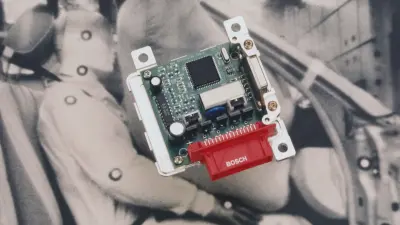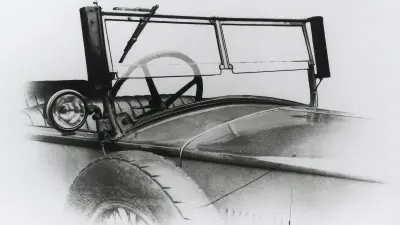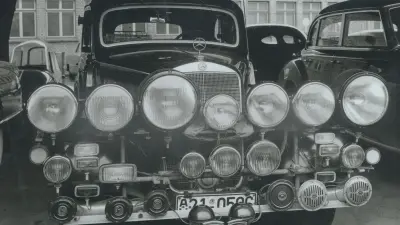Ahead of our time?
Milestones in mobility at Bosch

The mobility of the future has always been a fascinating subject. The transportation of people and goods is essential for a functioning society and economy, and has constantly evolved. Railroads and automobiles pointed the way forward toward mobility for the masses. By the mid-20th century, traffic density and environmental awareness were driving innovation. Today, research and development are focused on autonomous, connected, and electric vehicles.
Heading towards mass mobility
“Once you have traveled by motor vehicle, you will soon find horses incredibly boring. Horse riding is certainly a good form of exercise, but it is not a means of transport,” wrote Robert Bosch to a friend in 1906. The rise of the automobile had begun, and Bosch was just starting to make money from it. Together with his associates, he had developed the first reliable ignition. But because the number of automobiles on the road was still low, Bosch had to advertise his product in every market around the world. Nevertheless, he sensed that the future lay in mass mobility — that cars and motorcycles would enable long distances to be covered at great speed.
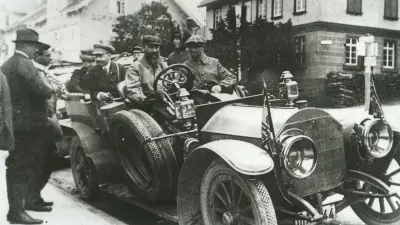
“The goal of mechanization and technology is: a car for everyone!”
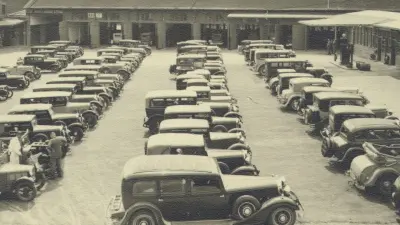
In the first two decades of the 20th century, Bosch was already launching products that made driving safer and more comfortable, such as lights, starters, and windshield wipers. But the car was still a luxury product that was only available to the wealthy, for whom it represented freedom and status. In the 1920s and 1930s, the focus shifted to rationalizing production in order to make automobiles affordable for more people. In 1931, Robert Bosch predicted that mass mobility would arrive in the next four decades: “Mass production will make cars cheaper. In Argentina, beggars ride horses, but the fuel for their means of transport grows on the side of the road.”
This laconic remark preempted a debate that would emerge four decades later about the effects of mass mobility on resources and the environment.
The impact of mobility becomes the driving force

For years, engineers strove to make cars more and more powerful, reliable, and comfortable — and the world around them also adapted to this new era. Urban planning was centered around the automobile and the idea that every part of day-to-day life should be accessible on four wheels. In the 1970s, however, opinions began to shift fundamentally.
Metropolitan areas swamped by cars were choking on huge levels of exhaust gas. Then the oil crisis happened, reminding the world that raw materials are not infinitely available and laying bare complex political and economic dependencies. On top of that, annual road fatalities in advanced economies peaked in the early 1970s.
Bosch was quick to recognize the new demands on mobility. In 1973, the company pooled its research and development activities for the future. The overarching principle was summed up by the company’s slogan “safe, clean, economical.” The products launched under the 3S program represented important advances in all three areas: safety features such as antilock braking systems prevented many serious accidents, and innovative electronic control systems significantly reduced fuel consumption and emissions.
After the 1971 IAA was canceled “for economic reasons,” the next event in 1973 adopted the slogan “Taking the Car into the Future” in a clear attempt to counter the “demonization of the automobile.” Bosch, too, dared to look far ahead into the future on the first floor of its booth, where it unveiled a concept known as “automatic vehicle guidance, in which the vehicle is guided along using a leader cable laid in the road.” The developers saw initial applications for the system primarily in freight transport, such as container shipment, or in mining. But their sights were firmly set on one main goal: “use on public roads.”
Solution: automated driving
Countless accidents can be prevented today thanks to the vision of the future laid out in the early 1970s as well as long-established features such as ABS and airbags. But despite all that, humans remain the one factor that can never be perfect. What if the driving was done by a machine that ensured no accidents happened and no traffic jams were formed? Back in the 1970s, researchers at Bosch explored this vision of the future.
Many initial ideas, such as “automatic vehicle guidance” using leader cables, were not yet technically feasible. But looking back, there was always one common theme. The possibilities offered by autonomous driving have been repeatedly investigated by Bosch over the years, and the first steps toward automation – automatic emergency braking and adaptive cruise control – have reached the production stage in the past decade.
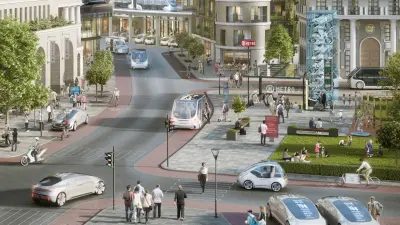
The researchers persevered in the face of considerable technological and bureaucratic hurdles, enabling Bosch to present an autonomous self-driving truck in 1993.
According to project director Prof. Gert Siegle, such a vehicle “has to be capable of doing what drivers can do with their sense of sight and thinking: keeping the vehicle on the road and finding a destination that can be reached by road of its own accord.”
Since then, highly automated Bosch test vehicles have driven millions of kilometers on public roads. If humans were merely passengers, this technology could bring major benefits. The world’s total parking space, which is three times the size of Luxembourg, could be reduced by 60 percent as a result of autonomous driving. In addition, the traffic accidents that could be prevented would save an economy such as the United States 500 billion dollars a year and avoid considerable human suffering.
The beginnings of autonomous driving

Loading the video requires your consent. If you agree by clicking on the Play icon, the video will load and data will be transmitted to Google as well as information will be accessed and stored by Google on your device. Google may be able to link these data or information with existing data.
Exploring autonomous driving in 1993: a test vehicle on the roads around Hildesheim, Germany

